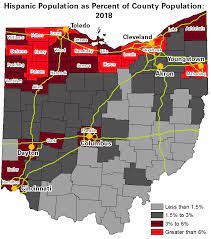
The news article “Asylum-seekers who cross the border illegally to be deported under new Biden administration rule” by Nick Miroff at the Texas Tribune discusses the plans for a new immigration rule announced by the Biden administration on Tuesday, February 21. Essentially, this temporary rule would penalize asylum seekers who entered the country illegally or who did not seek the appropriate protection from other countries as they travel to the United States. The goal of this proposed measure is to “encourage migrants to avail themselves of lawful, safe, and orderly pathways into the United States, or otherwise to seek asylum or other protection in countries through which they travel, thereby reducing reliance on human smuggling networks that exploit migrants for financial gain”(Miroff). Miroff goes on to explain that this would make it far easier for the United States to deport asylum seekers who enter the country illegally and express a fear of harm, reducing the number who are allowed into the United States pending a hearing in swamped immigration courts. Currently, the proposal is open to a 30-day public comment section and, if approved, would go into effect before the May 11th expiration of Title 42 (Miroff). So far, many humanitarian organizations and leaders have pushed against this proposed rule, saying that it resurrects “one of the most harmful and illegal anti-asylum policies of the Trump administration” (Miroff).
Journalist Nick Miroff is critical of this proposal without specifically expressing or inserting his own opinions. To convey this, he includes quotes from humanitarian activists and critics of the plan. Throughout the article, immigrants are depicted as victims of a failing system. Unfortunately, the article does not include any quotes or stories from actual migrants or non-citizens, which does taint how immigrants are portrayed in the piece because they are not able to represent themselves. I found Miroff’s point compelling but leaning toward neutral. He seemed to want to stick to “the facts” and appeal to both sides of the polarized political spectrum, although notably, he does not include any quotes supporting the proposal besides those released by the administration itself.
Miroff does not bring in his limited quantitative evidence until the end of the article when he discusses the increasing number of migrations in recent times. Most of the time, Miroff does a good job of integrating his quantitative evidence into his writing in an understandable way, although the source “government data” is a bit vague. I think Miroff’s most successful integration of quantitative evidence can be found at the very end of the article. Here, Miroff is discussing the January 5th deal the Biden Administration made with Mexico that allowed authorities to send back across the border up to 30,000 migrants per month from Cuba, Haiti, Nicaragua, and Venezuela if they crossed illegally. Miroff writes “In the weeks that followed the Jan. 5 announcement, illegal crossings by migrants from Cuba, Haiti, Nicaragua, and Venezuela dropped 97%, according to government data. Officials said they believe the new asylum restrictions could have a similar deterrent effect” (Miroff). I think that this statistic fits nicely with the message and point of view of the article and effectively illustrates the reasoning of the administration, while still leaving the reader to think about what exactly is deterring migrants.
As already briefly mentioned, Miroff includes some statements from humanitarian activists and opponents of the plan. Beyond this, he quotes the proposal itself and an unnamed representative of the Biden Administration. Additionally, he includes some information about how asylum functions in the United States and the accompanying court procedures. All of this qualitative evidence fits nicely with his tone and point of view, appealing to emotion and making the reader feel empathy toward to migrant populations discussed. The critics of the plan are framed as “correct” and the quotes from the administration are not put on that same pedestal but are still framed as rational. I would have liked to see what migrants themselves thought of the proposal and how it might affect existing pathways to asylum.
I found that this article connected with our class themes in a number of ways. First, it illustrates how effective writing on politically and historically hot topics benefits from the use of quantitative and qualitative evidence together. Second, this article reminds me of the repeating theme in United States immigration history where groups of migrants are deemed as undesirable. In this case, those seeking asylum and fleeing from violence are deemed undesirable simply because there are too many people. Overall, I found Nick Miroff’s use of evidence strong and compelling. I liked how this article made me think about both sides of the debate and that it used quantitative evidence with qualitative evidence to strengthen its claims. However, I think that the piece would be stronger with more evidence of both types.
